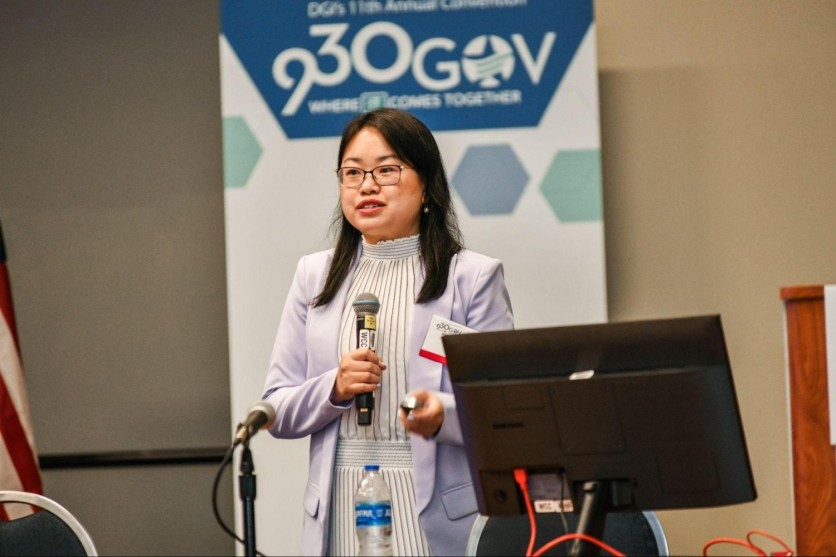The infiltration of artificial intelligence into mainstream business presents both huge opportunities and complex challenges. As companies race to integrate AI's predictive powers into operations, products, and decisions, a new leadership role has emerged—the Chief Data & AI Officer (CDAIO).
CDAIOs align vital data and AI assets to reach strategic goals. The role demands technical know-how, business sense, communication skills, and breaking down long-standing departmental divides. Organizations that bring on CDAIOs early in their AI journey gain a real competitive advantage.
"No technology has been as hugely impactful across enterprises," says Peggy Tsai, AI advisor and Chief Data Officer at data privacy firm BigID and executive coach at Carnegie Mellon University. "AI is no longer just an IT matter, it accelerates every business process in the organization."

With over 20 years of driving data innovation at leading companies, Peggy has witnessed AI rise from a buzzword to a daily reality. "It's still early days," she says. "Best practices don't exist yet for scaling AI. Everyone is still learning and testing the new technologies, which makes it so exciting. Whoever can iterate and figure it out the fastest gets the first mover advantage."
In this exciting Wild-West phase, how can CDAIOs accelerate their organization's AI adoption? Peggy advises they focus first on these key building blocks:
Assess AI Maturity
Get the lay of the land. Evaluate the sophistication of current AI initiatives. Look beyond one-off vanity projects to understand real integration depth. Interview technologists and business leaders to map existing use cases, data pipelines, roles, and gaps. This baseline enables smarter decisions later about capabilities and skills to build vs. buy.
Analyze Stakeholder Needs
Continue broad research by interviewing diverse groups, such as compliance, security, operations, etc. Discover major friction points and inefficient processes ripe for AI improvement. Learn clear needs but also opportunities around customization, personalization, and automation that users don't know to ask for yet.
Prioritize High-Impact AI Applications
With organizations hungry for AI but resources still limited, CDAIOs must be judicious in selecting initial use cases by weighing implementation difficulty against potential business value upside. This highlights opportunities with quicker wins, superior scalability, and positive cascading effects into future initiatives.
Pilot for Scale
Once target applications are chosen, launch a small pilot project showcasing AI's end-to-end merits for that domain while testing deployment mechanics. View the pilot not as a one-off app but as Version 1 of a model expandable across other departments, able to tackle more complex decisions over time and power new innovations.
Install Governance Guardrails
With pilots demonstrating tangible AI value, put in place lightweight governance guardrails to stimulate growth while managing risks around security, ethics, and performance deterioration. Create an AI Governance Council of rotating business and technical leaders to hone these frameworks as AI usage continues to spread.
Integrate into Existing Data Infrastructure
Rather than displacing entire technology stacks, integrate AI modules into current analytics pipelines where possible. Existing data science platforms, model validation systems, and open-source technologies may serve AI projects well.
Assemble Cross-Discipline AI Teams
To accelerate scaling, create small, agile teams drawing from business, technology, analytics, privacy, and data to implement prioritized AI solutions quickly. Multidisciplinary collaboration sparks innovation. Ensure these teams adhere to emerging governance guidelines so AI projects remain ethical, responsible, and measurable.
Reorganize Departments to Support AI Adoption
Adapt organizational structures, processes, and culture to harness AI capabilities fully. Drive faster implementations by creating roles and teams focused specifically on AI integration, education, and governance across the business.
While strategies will evolve in the upcoming years, following this initial playbook now will help new CDAIOs transform organizational structure faster in the upcoming years, leveraging AI.
"We're figuring it out together," Peggy promises. True. But those who build the right foundation now will lead the AI revolution into the future.
ⓒ 2025 TECHTIMES.com All rights reserved. Do not reproduce without permission.





